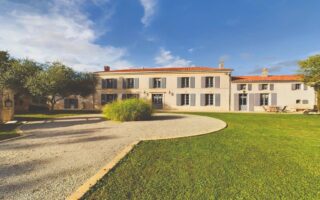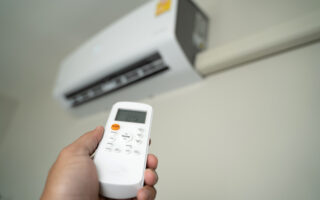3 – Phase Electricity Supplies

A large house and / or commercial business often has a 3-phase distribution because the load requirement is too great for the single phase supply available, or in areas where poor or difficult EDF distribution exists. Farms being typical because of their remote location. In addition an industrial user may have electrical machinery that requires 3-phase 380 volts for its operation. A rating of 30amps per phase (90 amps in total) is adequate for almost every situation, the exceptions being industrial premises with large machinery and a small house which requires much less.
For a domestic dwelling the standing charges by EDF for a 3-phase supply can be higher than that of single phase, but where there is a large load requirement it is often the only practical solution. At the point where the EDF distributed 3-phase supply enters the building it is split on the consumer’s side to provide 3 individual 230 volt single phase supplies within the distribution fuse box.
A large 3-phase supply attracts high EDF charges and may not be the best economical solution for your situation. Alternatively, devices are available (delesteurs) which prioritise your power consumption for the most economical use. Professional advice should be sought about their application and installation
The electrical load on a 3-phase distributed supply must be equally balanced across all the incoming 3 phases to avoid the EDF main breaker (disjoncteur differential) tripping. If you experience this problem the appliances being used must be spread around the power sockets in the installation to distribute the load evenly.
The most common problem area is kitchen appliances. In France, larger power appliances like washing machines, dishwashers, water heaters etc require separate circuits, which when installed initially are balanced at the consumer unit across the supply.
By simply plugging your appliances into any of the available sockets in the kitchen area you can create an imbalance which causes the breaker to trip. By identifying dedicated power room sockets (which may be in a laundry or store) you will eliminate the problem.
Alternatively if you require all your appliances to be located in the kitchen area, extra power circuits can be added and the existing sockets re-arranged at the consumer unit, so as to be balanced evenly across the supply.
Electric cookers, water heaters and machinery will also need to be balanced when connected and most of the equipment bought in France will have the facility to be used with either single phase or 3-phase supplies. However always check before purchasing.
If you are considering a new 3-phase supply you must calculate your power loading requirements by totalling the KW of all your appliances and assessing what is likely to be operated at the same time. Then split the total 3 ways and add essential equipment loads to give the base load requirement.
Large cooking ranges, electric heating and heated swimming pools and have a high power consumption and should you have letting facilities i.e. gites or caravans on the same supply it is almost certain you will need a balanced 3-phase distributed supply in order to provide the power requirement and avoid tripping of the main EDF breaker at critical time periods.
By David Broadhurst of DB Technical
siret: 452. 750. 466. 00024.
St Amand le Petit, 871
dbtech87@orange.fr
Share to: Facebook Twitter LinkedIn Email
More in businesses, cooking, gites, heating, renovation, swimming pools
By FrenchEntrée
Leave a reply
Your email address will not be published. Required fields are marked *



